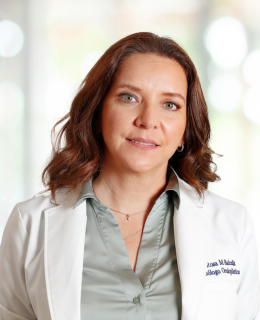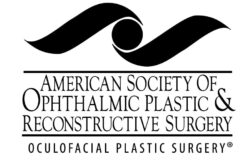
Reconstructive & Functional Plastic Surgery
Our state-of-the art facilities and team of specialists allow Cincinnati Eye Institute to offer a full range of reconstructive and functional oculoplastic surgery treatments and procedures.
Reconstructive & Functional Oculoplastic Surgery Options
Our highly experienced, board certified Oculoplastic and Reconstructive surgeons are talented in cosmetic, reconstructive, and functional treatments for the eyelids, orbits, and facial structures.
Our Oculoplastic and Reconstructive Surgeons are double board certified by both the American Board of Ophthalmology and the American Society for Ophthalmic Plastic and Reconstructive Surgery (Oculofacial Plastic Surgery). Following completion of residency training in all aspects of ophthalmology, oculofacial plastic surgeons complete highly competitive fellowship training in facial rejuvenation and disorders of the eyelid, orbit, and tear drainage system.
Dacryocystorhinostomy (DCR)
DCR is surgery to treat excess watering or tearing of the eyes due to dysfunction of the normal tear drainage system. During DCR, an Oculoplastic surgeon creates a new pathway for tear drainage between the eyes and nose.
Misdirected Eyelashes (Trichiasis)
When an eyelash grows in toward the eye, it can be irritating, painful, and may also affect vision. In some cases, an ophthalmologist can quickly relieve symptoms by numbing the area and gently plucking the rogue hair. In more stubborn cases, it may be necessary to perform cryosurgery, ablation, or electrolysis.
Mohs Surgery
Mohs surgery for skin cancer near the eyes requires meticulous attention from a highly specialized team, typically including a dermatologist and an Oculoplastic and Reconstructive surgeon. Mohs surgery is a specialized procedure in which cancerous cells are delicately removed while preserving the healthy surrounding tissues. Our Oculoplastic and Reconstructive surgeons possess the unique skill set needed to reconstruct facial tissues affected by skin cancers following Mohs procedures.
Nerve Sheath Fenestration
Also known as Optic Nerve Sheath Fenestration or ONSF, this procedure is performed to treat idiopathic intracranial hypertension. This condition, sometimes referred to as pseudotumor cerebri or false brain tumor, causes increased fluid pressure within the brain and spine which can cause vision damage if not treated.
Orbital Decompression
Orbital decompression surgery is typically performed for patients with proptosis (bulging of the eye) in
Trusted Source
Graves Disease Treatment
American Academy of Ophthalmology
Go to Source
thyroid eye disease (TED).
Orbital decompression increases the available space for the orbital contents, thereby reducing the degree of proptosis. This is achieved by removing part of the wall(s) of the orbit, and, in some patients, by the removal of some of the orbital fatty tissue. Surgery may be performed solely by an Oculoplastic surgeon or may be performed in combination with an otolaryngologist specializing in sinus surgery. The main reasons for orbital decompression are to reduce proptosis and to treat visual loss due to raised intraorbital pressure.
Orbital Tumors
An orbital tumor is a tumor that grows within the eye socket. Orbital tumors can be benign or malignant. A mass or tumor may cause cosmetic and functional issues and can be treated by one of our board certified Oculoplastic and Reconstructive Surgeons.
Strabismus
Strabismus is the medical term for misalignment of the eyes, when muscle dysfunction or injury causes the eyes to point in
Trusted Source
Strabismus (crossed eyes)
American Optometric Association
Go to Source
different directions.
In some cases, an eye patch or prescription eyeglasses can treat misalignment while eye muscle surgery may be necessary to treat more severe cases.
Tearing Problems
A blocked tear drain can cause excessive tearing or abnormal tear drainage and can be either temporary or chronic. Chronic tearing problems can be treated through a variety of surgical procedures performed by an Oculoplastic and Reconstructive Surgeon to relieve excess tearing and restore normal tear outflow.
Thyroid Eye Disease
In addition to Graves Disease, thyroid disease can affect the eyes and vision in a variety of ways. Thyroid Eye Disease can cause both cosmetic and functional issues for the eyes. An experienced ophthalmologist can provide treatment in the form of medications or surgery for patients affected by Thyroid Eye Disease.
Contact Cincinnati Eye Institute
When an eye condition causes cosmetic and functional problems, it should be treated by an ophthalmologist who has deep experience in oculoplastic surgery. At Cincinnati Eye Institute, our patients can feel confident that they are entrusting both their vision and their appearance to world-class Oculoplastic and Reconstructive surgeons who have the skill, expertise, and technique necessary to ensure the very best results.
1 American Academy of Ophthalmology. Graves Disease Treatment. Available: https://www.aao.org/eye-health/diseases/graves-disease-treatment. Accessed October 9, 2020.
2 American Optometric Association. Strabismus (crossed eyes). Available: https://www.aoa.org/healthy-eyes/eye-and-vision-conditions/strabismus?sso=y. Accessed October 9, 2020.
The doctors at Cincinnati Eye Institute have either authored or reviewed the content on this site.



